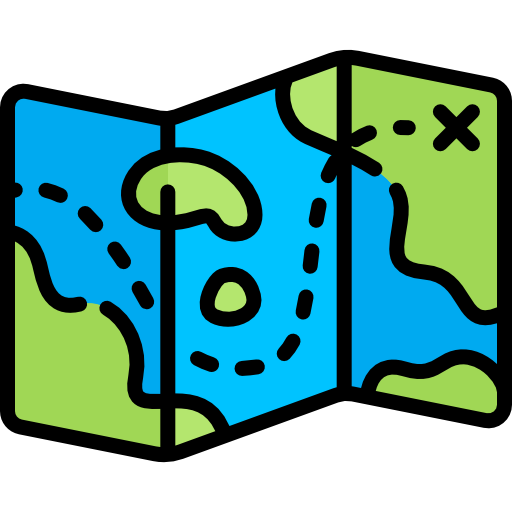Har Ki Dun Trek
13000 / Per Person

Altitude :
12100 ft.

Duration:
7 Days

Trek Length
35km

Base Camp:
Sankari

Trek Difficulty :
Easy to Mod.

Altitude :
12100 ft.

Duration:
7 Days

Trek Length
35km

Base Camp:
Sankri

Trek Difficulty :
Easy to Mod.
Overview
Har Ki Dun Journey, also known as the Har Ki Doon Trek, is a classic example of a historic and epic adventure trek. This is where the heart of mythology may be found. The area also has expansive pastures, meadows, and The route is lovely, with flowers blossoming all around and snow covering the ground in the winter; there are many different kinds of trees in the forest, and you may observe a few different kinds of birds. vistas of the Great Himalayas, pine woods, glacier ranges, and mountain peaks. Only in Har Ki Doon, also known as Har Ki dun (The Valley of Gods), can you get a view of the surrounding mountains. Locations such as Bandarpoonch, Black Peak, Kalanag, Bali Pass, Ruinsara Lake, and Swargarohini (Parts I, II, and III). Other mountaintops, too! You will pass across several historic settlements on your tour. Aged at almost 300 years, it will undoubtedly transport you to another era. Along the way, you’ll see how the locals live and visit their towns, which are surrounded by lush fields of greenery. People in that area continue to hold Duryodhana in high regard even in modern times. Somber scenery and ancient traditions characterise a trip to Har Ki Dun.
Those interested in travel and the outdoors should definitely check it out. Use of the Har Ki Dun The beautiful Garhwal area of the Uttarakhand Himalayas. It’s a big valley that, in keeping with Indian mythology, is still called “Har Ki Dun” to this day. Indeed, the “Valley of the Gods” has been there for well over half a millennium. In addition to its stunning scenery, Har Ki Dun is rich in mythological and historical significance. The expected tropical climate exists, and the surrounding verdant vegetation is relaxing. That explains why Har Ki Dun is also known as the Valley of the Gods.
Itinerary
Day 1: Drive from Dehradun to Sankri
Distance: 180Kms
Time: 6-7hrs
At a central location in Dehradun, we gather with our other members, and then we go to a restaurant for an early lunch (expense is yours). After leaving Mussoorie, continue driving to Sankri by way of Kempty Fall, Yamuna Valley, Tons Valley, Nainbagh, Nowgaon, Purola, and Jarmola. We have made reservations at a hotel for the night.
Day2: From Sankri to Osla
Distance: 13Kms
We check out of our room after breakfast and make our way to the very last town before reaching the main road. The Govind Wild Life Sanctuary is around 13 kilometres away from this picture-perfect town (Sankri is the place where the check post is located). Har-ki-dun is situated at an elevation of 3566 metres, while the Swargarohini Peak rises to a height of 6096 metres in the background. Sankri serves as the entrance to this area. Sankari to Taluka via jeep if road is passable. The beginning of our hike is in Taluka, and from there we make our way down the glacial Supin river for the first portion of the journey. Taluka is a tiny hamlet that is recognised for being snuggled in the lap of nature. It is also known for its exquisite “Pahari homes” that are fashioned out of a complex ensemble of wood, stone, and mud – a structure that should not be missed since it is resistant to earthquakes, has animal stalls on the bottom level, and uses the heat generated by the animals’ bodies to warm the living space on the floor immediately above! The residents of the community, who live at an elevation of 1900 metres, have access to everyday necessities via the village’s guesthouses and the handful of shack businesses that are situated there.
Day3: From Osla or Seema to Waterfall campside
Distance: 13Kms
Time: 6-7hrs
The path that leaves the settlement of Osla first heads downhill and then continues gently on the true left side of the valley that is next to the river Supin. After some time has passed, the path continues to wound uphill through an attractive forest that is full of chestnut, walnut, and willow trees on its way to the settlement. Osla hamlet may be seen out in the distance on the valley’s actual right. The journey to Seema will continue when one reaches this stage. The settlement of Osla may be seen in the distance from the camping area, which is situated across a rapid river. Overnight in tents. Meals: Breakfast, Lunch & Dinner.
Day4: From Waterfall to Har Ki Dun and Back
Distance: 12Kms
Time: 6-7hrs
The route that begins at the Waterfall campside then continues on the true left site of the valley, travels through farmland, and then over a hanging bridge over the river Supin to arrive on the right side of the valley. The path now begins its ascent, passing through several farms and pastures that are dotted with houses. On the other side of the valley is some amazing coniferous vegetation that any photographer would be lucky to capture on film. The climb up to Har ki Dun is a gentle one, but it rewards visitors with breathtaking panoramas of snow-capped mountains and verdant, terraced alpine farms. The last challenging ascent of around 200 metres brings one to the renowned meadows of Har ki Dun, where one can see the west face of Swargrohini towering above the valley. A little creek runs through the area where the camp is set up, and the summits of Har Ki Dun and Swargarohini can be seen in the distance. On the Same Day, Descend to the Waterfall’s Basecamp.
Day5: From Waterfall To Osla Village or Seema
Even before arriving in Har Ki Dun, one may have a good look at the majesty of Swargarohini, as well as Kala Nag, Bandar Pouchch, and the Ruinsara Peaks. A genuinely paradisiacal and quiet location, ideal for people who wish to spend some time by themselves while feeling at one with the vastness of the landscape. Either turn to the right towards Swargarohini and the Jumnar glacier or turn to the left towards the Borasu pass (Taking one to Chitkul in Himachal). The bottom of the enormous and gorgeous valley is covered with soft grassy areas, and the valley is surrounded on three sides by large mountains. Overnight in tents. Meals: Breakfast, Lunch & Dinner
Day6: From Osla or Seema to Sankri
The journey back to Sankri Vai from Taluka of Sankri is an easy stroll that provides many opportunities to enjoy and photograph the natural beauty of the valley and the surrounding villages.
Day7: From Sankri to Dehradun
We start the day with a hearty breakfast and then go to Mori. If the weather cooperates, we are going to go white water rafting. After that, we get in our vehicle and travel from Mori to Dehradun so that we may take our train or aircraft. Breakfast and lunch will be provided.
Inclusion
- 7 days premium trek
- Double sharing basis of tents through the trek.
- Dehradun to Sankri & Return Transport in Tempo/Bolero/Sumo Vehicle
- All meals – vegetarian
- Campfire at Camps (If Available)
- Trekking permits and forest camping charges
- Trekking equipment (Tents, sleeping bags, ice axes, ropes, etc.)
- Expert trek leader (qualified in basic/advanced mountaineering courses)
- Services by Expert Team (guides, cooks, helpers)
- Safety equipments (first aid, medical kit, etc.)
- Achievement Certificate
- Memories of Life Time
Exclusion
- Pickup from your place
- Luggage carries charges
- Food during travel
- Any kind of personal expenses
Fitness
As you climb to higher altitudes, the air grows thinner and less oxygen is present. The amount of oxygen in our blood is equivalent to the proportion of haemoglobin that is saturated with oxygen. At altitudes above around 2,100 metres (7,000 feet), the amount of oxygen carried by our blood starts to decrease. At the same time, the human body possesses both immediate and long-term adaptations to altitude that help it somewhat compensate for the shortage of oxygen.
A Great First Trek for Anyone Who Wants to Get Into Hiking:
- The Har Ki Dun Trek is an Easy to Moderate level trek in terms of fitness requirements. The track is well-marked and has only modest inclines and declines. Water fountains may be seen at various points throughout the path. However, it’s still best to be ready if you’re planning your first major Himalayan trekking adventure. Here is a plan for getting in shape for the trip.
- Our hikes are typically designed such that you cover around 9 kilometres in six hours, however this might vary somewhat depending on the terrain. It’s about the same as walking 6 kilometres an hour over the plains, therefore the speed is around 1.5 kilometres per hour.
- Following this plan, you may train yourself to run 3 kilometres in 30 minutes. Always begin your workout routine with some light stretching and warm-up moves.
- Follow this training schedule for trekking fitness required:
- Week 1: Walk for 10 minutes at a fast pace, jog for 10, and finish with a slow stroll for 10 minutes.
- Week 2: 15 minutes of jogging, followed by a 5-minute brisk walk. A leisurely stroll that takes no more than 5 minutes
- Week 3: Walk briskly for five minutes. Jogging for 15 minutes A brisk stroll that takes no more than 5 minutes
- Week 4: Do a brisk 5-minute walk, then a 25-minute jog, and finish with a 5-minute cool down.
Safety
Points to remember for safety in the trek:
- It is essential that you arrive at the starting point of any hike or excursion in the best possible physical condition and readiness.
- The hike is not tough; in fact, if you can keep both your feet and your mind calm and strong during the journey, you will discover that the hike is rather simple.
- When you are out on a hike, bear in mind that you may not always be with your guide and that you may not always be on the correct trail.
- The majority of individuals glance both where they are going and where they are going while they are walking; this might produce twitching in your legs, which can make the whole journey difficult.
- It is imperative that you see your physician if you are experiencing any kind of health issue.
- It is imperative that I have my medical equipment with me at all times; it is of the utmost significance.
- Indiantreks will ensure that you have a fully stocked first aid kit at all times, including oxygen cylinders and other medications that may be required throughout the trek.
- In the event that any of the trekkers have any more difficulties, the stretcher is used to transport them back to the base camp.
- During the Har Ki Dun Trek walk, our camp is situated close to the tree line, so you won’t have any trouble getting enough oxygen there.
- In the event of a medical emergency, you should seek the assistance of your guide or another trekker who is knowledgeable in the area.
How To Reach
Directions to go to Dehradun:
- By Air: Jolly Grant Airport is the domestic airport that serves Dehradun, and it receives frequent flights from the main metropolises located across India.
- Traveling by Train: The Dehradun junction is the closest railway station, and it has excellent connections to major cities located around India.
- By Road: The road network in and around Dehradun is extensive and convenient. To get to Dehradun from Delhi or any of the other surrounding cities, you have the option of either driving there yourself or hiring a cab or taxi. In addition, there is a consistent bus service between Dehradun and the surrounding areas because to the extensive road network.
Thing To Carry
PARTICIPANTS MUST BRING FOR HAR KI DUN – TREK
- 50–60 ltrs backpack
- Strong hiking boots: a leather upper is best because it gives your ankles more support. If you don’t have a pair yet, you should get one as soon as possible and wear it a lot so that it breaks in well. This will help keep blisters from forming.
- Tennis shoes or sandals that are light enough to wear in camp
- Two pairs of thick wool socks, if possible.
- Two pairs of everyday nylon socks to wear underneath the wool socks to prevent blisters.
- One shirt for hiking, preferably with long sleeves.
- Long John top: This is also called thermal underwear, and it should be made of wool if it is the first layer.
- Two each of warm shirts and pants for camp
- 1 each rain cot/poncho
- Warm Jacket: 1
- One pair of wool gloves as thick as can be bought on the market.
- Long Johns: The first layer should be wool if possible.
- Under wear: 2-3 changes Shorts or pants for hiking: 1
- Sunscreen lotion is up to you. Chap stick or lip balm is optional.
- Water bottle: Two 1-liter bottles (Pepsi bottles work well), make sure they don’t leak.
- Headlamp or flashlight: A headlamp is best because it frees up your hands for work. If you bring a flashlight, bring extra batteries.
- Items for the bathroom, like a toothbrush, toothpaste, etc. And a small one-person medical kit.
- Cotton or nylon for a sun hat. Sunglasses: Those with an anchor are best.
Must Read Articles
Best time for the trek
🗓️ Best Time to Trek — A Guide by Octatrav
One of the key advantages of many Himalayan treks is that they remain accessible for a large part of the year. Most trekking routes open up in March, welcoming trekkers with springtime freshness and moderate temperatures. This season continues through late June, offering pleasant weather and clear views—ideal for a memorable trekking experience.
🍁 Trekking resumes in mid-September and continues until late November, when the landscape transforms with golden leaves and crisp air. This autumn window is perfect for those who prefer scenic beauty combined with clear skies.
❄️ Winter trekking, although breathtaking, comes with challenges. From December to mid-March, most high-altitude trails get buried under heavy snow, making them inaccessible or risky. Government authorities usually restrict entry during this time to avoid mishaps due to extreme cold, snowfall, and avalanches.
✅ Summary:
Spring & Summer (March–June): Best time for pleasant weather and blooming landscapes.
Monsoon (July–Early September): Most trails are closed due to safety concerns.
Autumn (Mid-September–November): Ideal time with great weather and views.
Winter (December–Mid-March): High snow levels; many treks remain closed.
With Octatrav, you’ll always be informed about the best seasons for your chosen trek. Our expert guidance ensures that you trek during the safest and most scenic times of the year, making your adventure both memorable and secure.
How Difficult is the trek
This trek is generally considered to be of moderate difficulty, with a rating that can vary from easy to challenging depending on your experience and fitness level.
The journey begins at a base village situated around 6,000 ft, gradually ascending to a maximum altitude of nearly 11,500 ft over the course of a few days.
While the route mostly involves a pleasant hike through scenic landscapes, here are two main reasons why it falls under the moderate category:
– Long daily distances: On average, you may be covering 10 km per day, which demands good stamina and consistent pacing.
– Limited exit points: Most treks of this nature have only one route in and out, making emergency exits or quick returns difficult in case of unforeseen situations.
How to get fit for your trek
How to Prepare for a High-Altitude Trek
Fitness Guide by Octatrav
Preparing for a trek requires building both stamina and strength. One of the best ways to get started is by jogging, which targets the same muscles used during trekking—calves, glutes, and hamstrings. It’s a simple and effective way to improve endurance without the need for any equipment.
Minimum Fitness Target
To trek comfortably, you should be able to run 5 km in under 60 minutes. This ensures that you can maintain a steady pace and handle long walking hours at altitude.
How to Achieve This?
Here’s a structured plan you can follow:
🏃♂️ Cardio Training:
Jog at least 4 times a week – consistency is key.
Start small – begin with 2 km runs and gradually increase the distance.
Pace improvement – once you’re running 5 km, aim to bring your timing down to under 35 minutes.
Maintain for 2 weeks – consistently hitting this goal helps build real endurance.
⏳ Training Duration:
Prepare for at least 4–6 weeks based on your current fitness level. The earlier you begin, the better your trek experience will be.
💪 Strength Training Routine
Combine cardio with strength workouts to build muscular endurance:
Squats – builds quads, glutes, and hamstrings.
Lunges – mimics trekking motion; strengthens the entire lower body.
Step-ups – improves climbing strength for steep trails.
Core exercises – planks, Russian twists, leg raises for balance and stability.
Back workouts – deadlifts, bent-over rows, and shoulder presses to carry your backpack with ease.
🧘♂️ Flexibility & Recovery
Stretch daily – especially your calves, hamstrings, quads, and lower back.
Incorporate yoga or Pilates – enhances flexibility and mental focus.
Take rest days – they are essential for muscle recovery and injury prevention.
🔁 Trek-Ready Summary
🏃♂️ Cardio: Build stamina through jogging.
💪 Strength: Focus on legs, back, and core.
🤸♂️ Flexibility: Stretch regularly and stay injury-free.
⏳ Consistency: Stick to a 6–8 week routine for best results.
10 Reasons to Choose Octatrav for Trek
Why Choose Octatrav for Your Trekking Adventure?
Trekking in the Himalayas is a thrilling and unforgettable experience. Whether you’re walking through snow-covered paths, lush forests, or peaceful riversides, choosing the right trekking operator is crucial for a safe and comfortable journey.
Octatrav stands out as a trusted name in the trekking world. Here are 10 strong reasons to choose Octatrav for your next high-altitude adventure:
1. Experienced Professionals
Octatrav’s team includes highly trained professionals who know the terrain, weather, and routes in depth. Their insights and support will elevate your trekking experience.
2. Focused on Safety
Trekking at altitude can be unpredictable. Octatrav ensures your safety by equipping the team with first-aid kits, oxygen, and emergency protocols for any situation.
3. Small Group Sizes
To give you personal attention and a relaxed experience, Octatrav keeps group sizes small. This also reduces environmental impact and makes for smoother trekking.
4. Eco-Friendly Trekking
Octatrav encourages responsible travel. From minimizing plastic use to proper waste disposal at campsites, they help you leave no trace.
5. Comfortable Camping
After a long day of trekking, good rest matters. Octatrav sets up cozy camps with quality tents, warm sleeping bags, and hot meals so you sleep well and stay energized.
6. Nutritious Meals
Fueling your body right is essential. Octatrav serves fresh, nutritious meals for both vegetarians and non-vegetarians to keep your energy levels high throughout the trek.
7. Affordable Packages
You don’t have to overspend for a great experience. Octatrav offers budget-friendly packages that include accommodation, meals, guidance, and permits—everything you need.
8. Relaxed & Scenic Pace
Octatrav designs treks that balance exploration and rest. You’ll get ample time to absorb the beauty around you without rushing through the journey.
9. Customizable Itineraries
Want a special experience? Octatrav helps you tailor the trek to your preference—be it a solo hike, photography-focused trail, or a slower pace.
10. Trusted by Trekkers
Octatrav is praised by many happy trekkers for its hospitality, safety, and professionalism. The positive reviews speak for themselves.
Why You Should Do the Har Ki Dun Trek
Why Choose This Himalayan Trek for Your Next Adventure? – by Octatrav
Exploring the Himalayas is a dream for many, and every trail has its own magic. Whether you’re a first-time trekker or a seasoned explorer, here are ten reasons why your next trek with Octatrav can be an unforgettable experience:
1. 🏔️ Breathtaking Scenery
Enjoy mesmerizing views of snow-covered peaks, lush green valleys, sparkling rivers, and alpine forests. Each turn on the trail feels like walking through a postcard.
2. 🏡 Rich Cultural Experience
Pass through remote villages where you can interact with warm-hearted locals, witness age-old traditions, and taste authentic mountain hospitality.
3. 🌿 Diverse Flora and Fauna
From rare Himalayan birds to elusive animals like musk deer or black bears, the region is rich in biodiversity. Nature lovers and wildlife photographers will find every step rewarding.
4. 🥾 Moderate Difficulty Level
Most Himalayan treks are rated as moderate, which makes them suitable for beginners with preparation, and still exciting for experienced trekkers looking for beauty and challenge.
5. 📖 Mythological & Historical Depth
Many Himalayan regions are steeped in legend and ancient lore. Walking these trails often feels like stepping into a living story from Indian epics or ancient folklore.
6. 🤫 Peaceful & Untouched
Less commercialized treks offer serene trails where you can disconnect from city chaos and truly reconnect with nature and yourself.
7. ⛺ Unique Campsites
Camp under a sky full of stars, beside rivers or deep in pine forests. The silence, the chill, the camaraderie — it’s an experience that stays with you forever.
8. 🎒 Adventure Add-ons
Beyond trekking, enjoy photography, bird watching, star-gazing, or even meditative moments in nature. It’s not just a trek — it’s a full adventure retreat.
9. 🌅 Magical Sunrises & Sunsets
Witness golden hours like never before — with Himalayan peaks glowing pink, orange, and gold. These views are pure magic and make every effort worthwhile.
10. 💪 Personal Growth
Trekking challenges your body and mind, pushing you beyond limits. By the end, you’ll not only have beautiful memories but also a stronger, more confident version of yourself.
